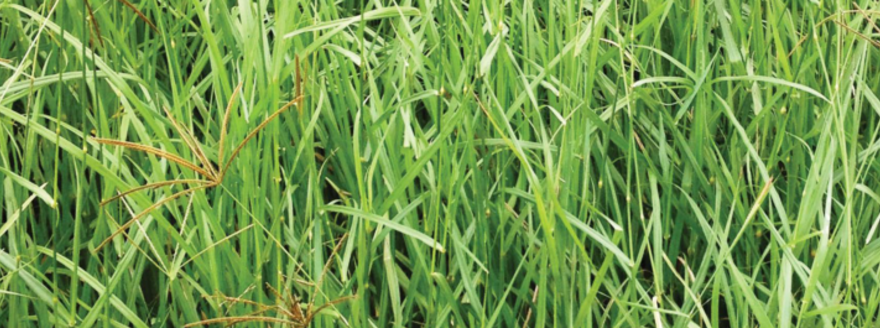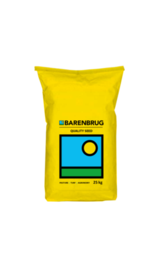Establishment
• October/November or February/March
• Do not plant/cover seed deeper than 25 mm
Soil preparation
• Early preparation helps retain moisture
• Seedbed: clean, even, free of weeds and well rolled
• Many failures occur when seedbeds are too loose and powdery
• Rolling before and after sowing ensures good establishment
• Rhodes grass can be sown on dry soils where the soil is inclined to form a hard crust after rolling
• Subsequent rain will wet the seed for germination
• A light shower of rain followed by long dry period could result in poor establishment
ENDURA
Endura is a diploid Rhodes grass that was bred in Australia. This perennial variety was selected from the market leading variety, Tolgar, taking the greatest characteristics of this long-standing variety and significantly improving forage quality. Leaf blades are thinner again, resulting in finer textured vegetative growth, with a reduced amount of stem. The enhanced multiple tillering ability of Endura produces a higher leaf to stem ratio, providing more consumable dry matter than Tolgar and Katambora. The result of intensive breeding selection work from Tolgar has resulted in Endura grass ability to make top quality hay, with conditioning and drying down traits significantly improved. Less stem results in more even dry down rates and the ability to capitalise on quick initial leaf dry down gains. Maturity evenness of this variety provides higher levels of protein feed later in the season that has higher utilisation rates. Endura demonstrates exceptional persistence and recovery after grazing or cutting. It flowers later compared to Tolgar and Katambora, providing Endura the ability to maintain feed quality longer into the season.
Key features
• Significantly later flowering than Tolgar and Katambora
• Greater synchronisation and uniformity of flowering over other varieties
• Higher leaf to stem ratio and finer stem compared to Tolgar and Katambora
• Highly suited to hay production – makes exceptional hay
• Well suited to grazing, reclamation and soil conservation activities
• Highly palatable due to less stems – greater feed utilisation
• Higher salinity tolerance than Katambora
• Nematode resistant – ideal rotational option
• Moderate drought, frost, cool season and acid tolerance




